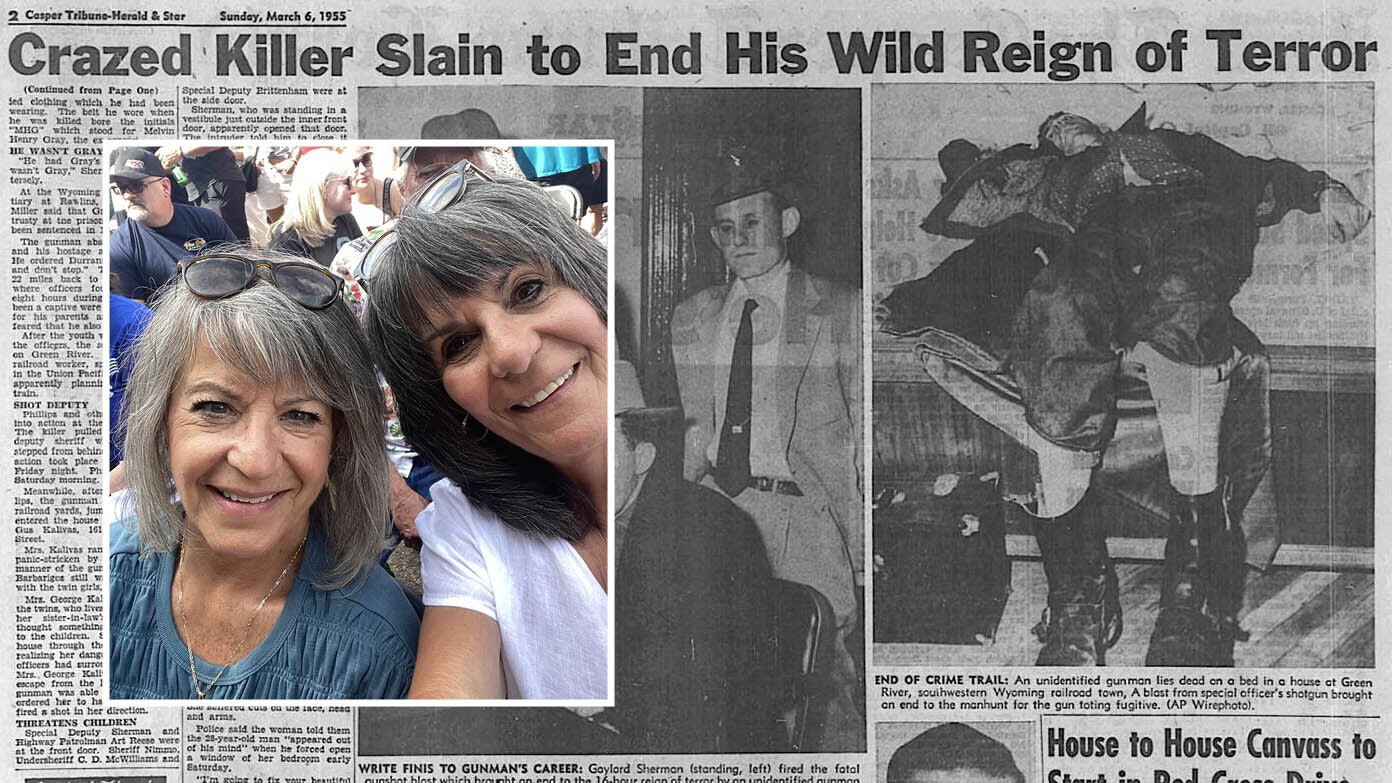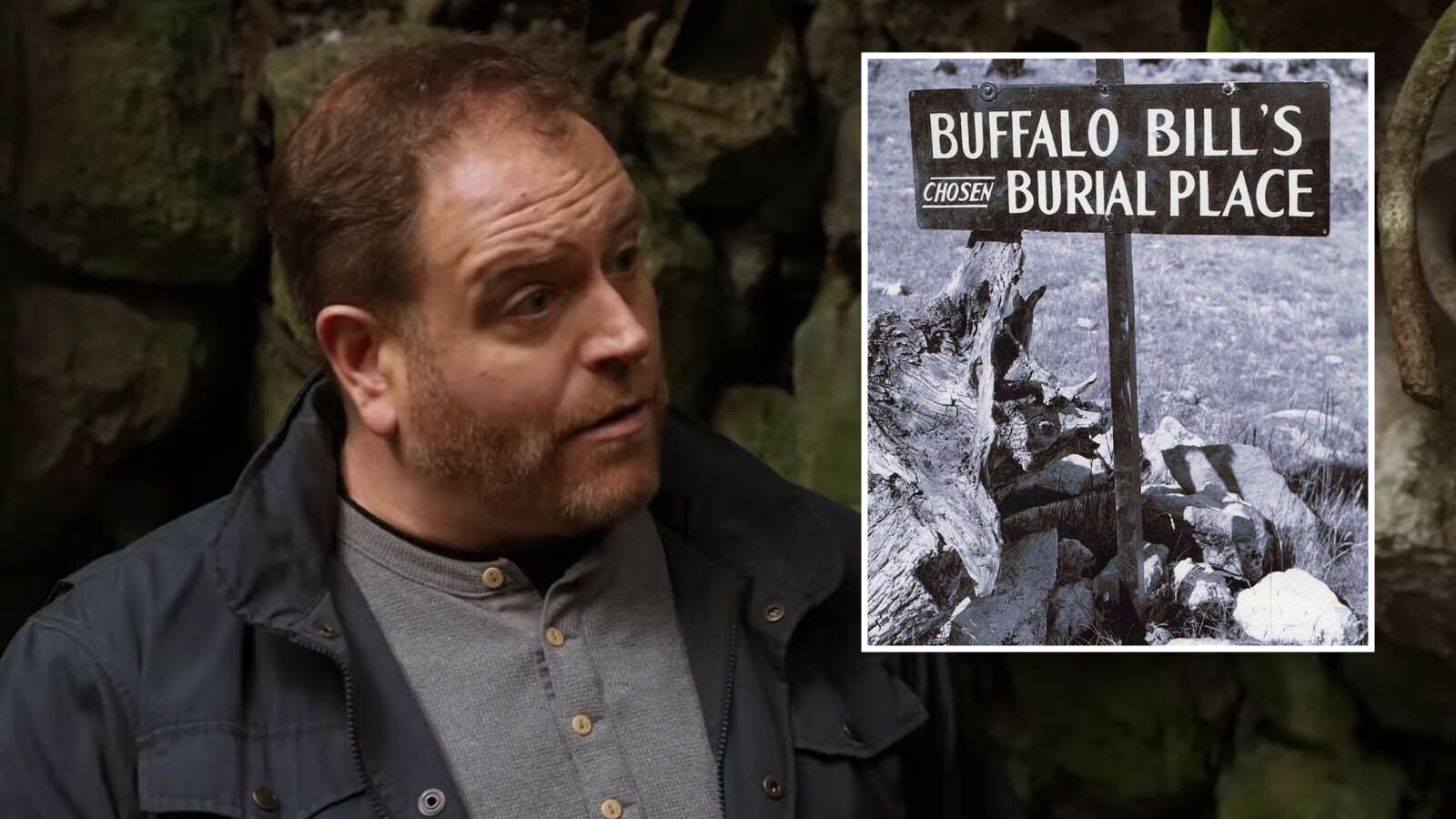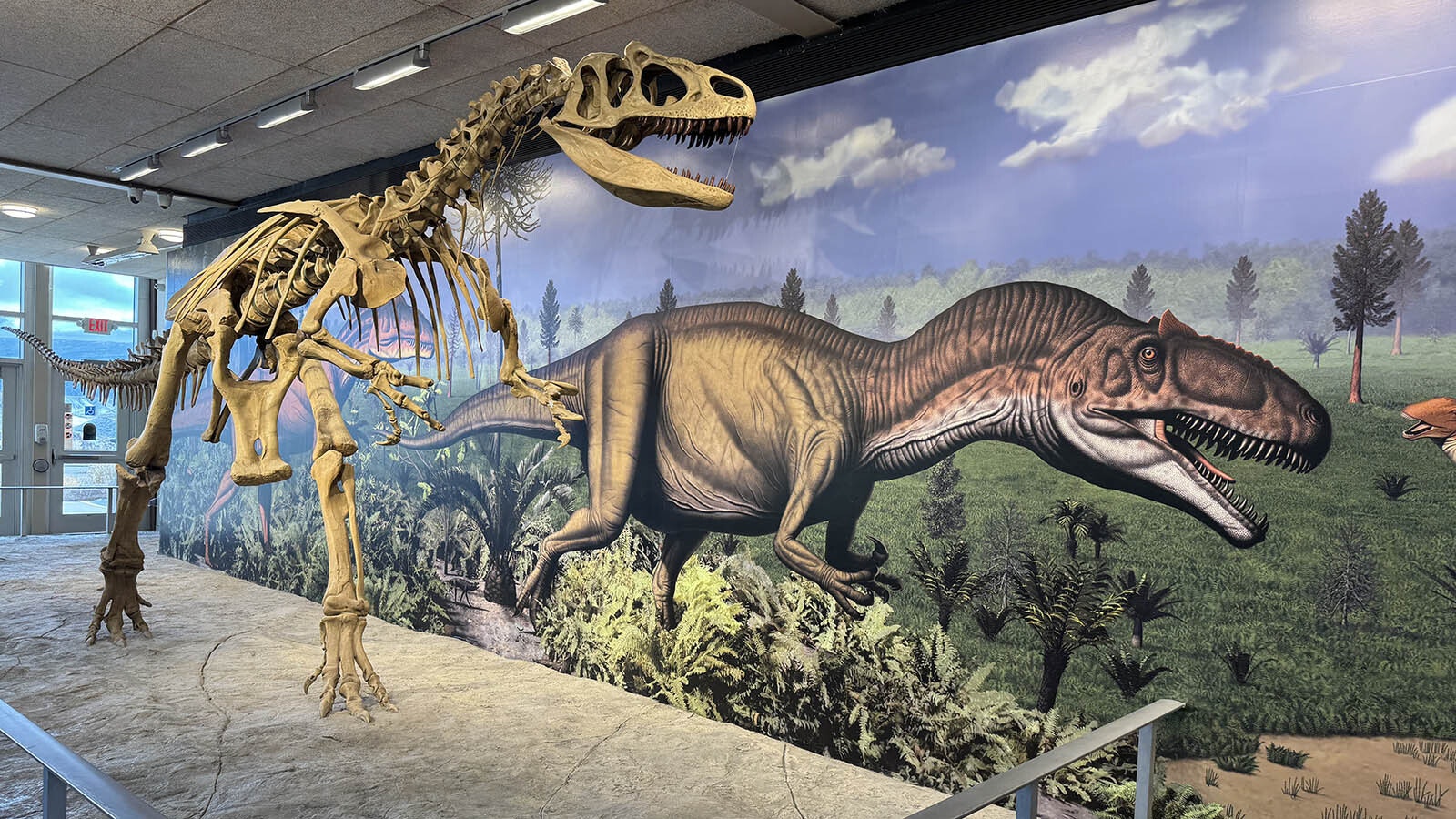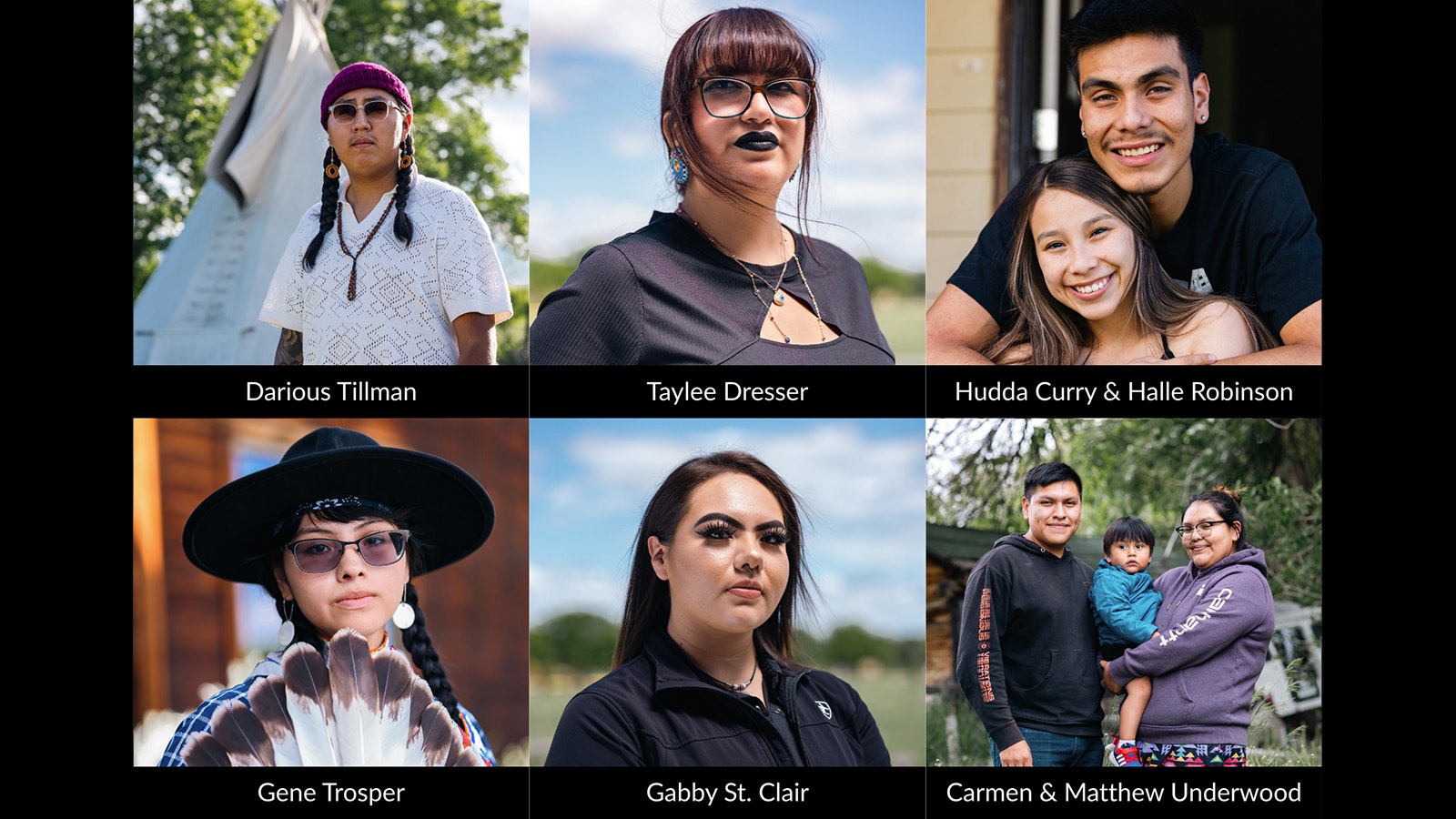CASPER — Dale Gregory prefers to live like its 1825 — or as much as that’s possible
With his felt beaver hat, colonial-style long shirt, Native American breechcloth, leggings, knife hanging from his neck, the 58-year-old Wyoming throwback mountain man is a living example of how the West’s famous explorers and guides tamed the region and became living legends in their own time.
These were men like Jim Bridger, Joe Meek, Hugh Glass and others who came West to trap beaver.
Gregory shares his passion for all things mountain man as much as he can, spreading his collection of tools of the trade on a blanket for display.
With the exception of a pair of small, oval dark sunglasses, he looks the part — leather moccasins and trousers, a red-and-white checkered shirt, wide-brimmed hat and belt holding pouches with important survival gear every mountain man would never be without.
“I am giving a representation of the mountain men who came out to this area and opened the West up,” he said on a recent Saturday at the Fort Caspar Museum in Casper.
“I have some of the items that they might have carried out here and am just talking to people and sharing some of the history of the mountain man rendezvous era and just trying to bring some awareness.”
A fictional book series his dad gave him as a boy featured a former mountain man leading a wagon train West. That character fired up Gregory’s imagination and drove him to learn more about the mountain-men era that he defines as from 1825-1840.
At the Fort Caspar grounds, Gregory set up a campsite that would have been something similar to what a mountain man might have attempted at one of the annual rendezvous where supplies were obtained and stored-up passions were let loose.
Beaver Fever
Gregory said the mountain man era can be traced to the fashion craze for felt top hats that were made from beaver pelts. Newspaper ads in the early 1820s sought young men willing to go West and trap the coveted animals.
An ad in the Missouri Gazette on Feb. 13, 1822, reproduced by Gregory, and shared at his campsite reads: “To Enterprising Young Men: The subscriber wished to engage 100 men to ascend the river Missouri to its source, there to be employed for one, two, or three years.
For particulars, enquire of Major Andrew Henry, near the Lead Mines, in the County of Washington, who will ascend with and command the party, or the subscriber at St. Louis.”
While the lure of the West promised romance and adventure, the reality often didn’t live up to that, Gregory said.
“A lot of them were attached to these fur trading companies and they were basically in debt the whole time they worked for the company,” he said. “Because of the guns and the powder, and stuff they got, they couldn’t trap enough beaver to pay off their supplies for the next year.”
Those who did manage to pay off the debt became free trappers and generally worked and traveled in groups of three or four.
The trappers were subject to attacks by native tribes, encounters with grizzlies, wolves, and mountain lions, and the challenges associated with placing good-sized steel traps in mountain streams to nab their prey.
The life span of a mountain man was not very long.
“Probably most of them didn’t survive out here much past 30 or 40 years old. It was a hard life and most died if they got old enough of the exposure, or Indian attack or bear attack, or whatever it might be,” Gregory said.
Flintlock Rifles
Gregory believes the most important items for the early white visitors to the region were their weapons.
He displays a 50-caliber Kentucky-style flintlock muzzle-loading rifle that was probably the go-to weapon for many of them. He said flintlock rifles and percussion cap rifles were available during the era.
“Most of them would have carried flintlocks over percussion because percussion would have carried a cap, like the old cap guns as kids,” he said. “If you lost those, your gun was useless. If you lost your flint, you could probably wander around and find a piece on the ground and knock something together enough to get your rifle to fire.”
Other important items included beaver traps — about 12 of them, two or three knives, powder for their weapon, and a fire-starting kit of flint, steel, and flammable material.
Clothing from the East would quickly have disintegrated in the rough mountain trapping environment.
For his role, Gregory said he chose the colonial-style long shirt that would have doubled as a sleep shirt, a breechcloth, and leggings.
He said while he has not found specific documentation that the items were worn, it makes sense because the mountain men would have had access to various native tribes, and some had native wives.
Gregory’s outfit also includes a pouch attached to a leather belt. A knife in a sheath is on his back and the smaller knife hangs around his neck.
He said the knife hanging in front was used to cut the cloth used as wadding and shoved down the barrel of the rifle as part of the firing process. The knife on his back was for skinning or self-defense.
Gregory wears a beard, but he believes most of the mountain men would have been clean shaven so they would not be easily identified by natives as being white.
Rendezvous
One of the things mountain men quickly learned was the importance of being resupplied for their seasonal activities.
Rendezvous were created where wagons of goods and supplies would be hauled out to a designated western location for trade. Beaver pelts were the currency for the goods.
“Now come rendezvous, they would have traded for some more leather pants, some cloth shirts, because they probably would have gone to leather shirts because their cotton and woolen shirts would have fallen apart too,” he said. “So, at rendezvous you would have needed to get enough lead and powder for your rifles, coffee, sugar, tobacco to last you for an entire year.”
Gregory said the men also participated in activities such as horse racing, knife throwing, foot races, horse races, and “any kind of competition for the time period that you could think of they probably were doing it.”
“Native Americans had games they played with different pieces of decorated bone and things kind of like a dice game,” Gregory said. “They had different (items) that they wagered on. And then they brought whiskey out and of course if you had not had anything to drink in a year, you can just imagine they are going to tie one on and a lot of them did and that led to a lot of interesting things.”
It was at a re-created rendezvous that Gregory became inspired as a 20-something to start acquiring his gear as a mountain man reenactor.
A native of the midwest, his first rendezvous reenactment events were in Southern Illinois. He said he appreciates the community of reenactors who come from all walks of life, but like him remain fascinated by the men who helped tame the frontier.
“You run into doctors and lawyers and truck drivers, there is a whole group of people that get out and do this and it is fun to get out and walk through camp at night,” he said. “There is always music, people playing banjos and guitars, and it’s just a lot of fun. I get a lot of enjoyment out of it.”
Favorite Mountain Man
Who is his favorite mountain man?
“If I had to choose one it would be Hugh Glass, but he’s not the only who would have been mauled by bear,” Gregory said. “But that story of resilience and drive, wow.”
Glass is alleged to have been mauled by a grizzly and left for dead without supplies by companions. He then is said to have somehow traveled 200 miles to a fort.
The story was portrayed by the 2015 movie “The Revenant.” It was based on a novel written by Michael Punke, a Torrington, Wyoming native.
Gregory hopes to do a few rendezvous events in the West in coming months and plans to be at Fort Caspar one Saturday a month through the summer.
Dale Killingbeck can be reached at dale@cowboystatedaily.com.










